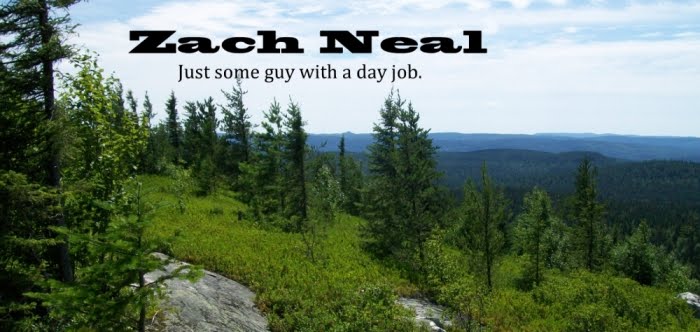 |
| Add caption |
Zach Neal
The Rowboat.
My first memories of being in a boat are from when I was
five or six years old. My dad took us in a ten or eleven-foot
long plywood
rowboat up into the
Pinery. This section of the Ausable River was clear and shallow. I
distinctly remember seeing some pretty big carp in there, the orange colour of
goldfish. My dad liked archery and I always wanted to try bow-hunting fish.
Somewhere there is a black and white photo of me
playing naked at the water’s edge as my mom had taken off my diapers to rinse
them. (This must have been an earlier trip, long before I became aware enough
to remember anything.)
The Speedboat.
Dad bought this seventeen-foot cedar strip runabout
with a twenty-five horsepower motor. They were called Peterborough boats,
from a certain era in the history of the Kawartha Lakes
and the Trent-Severn Waterway. Some relatives owned a campground on Sturgeon Lake.
We went there a few times, as well as Lake Simcoe, and the usual
stuff on the St. Clair
River and Lake Huron.
He was six-foot-two and weighed two hundred twenty or
thirty pounds and the motor would pull him on skis with my mom driving the
boat. The boat was about four and a half feet wide. It was low, barely two and
a half feet to the highest point on the deck. It wasn’t meant for the big lakes
like Huron. For small children, it was frankly terrifying to be in the rear
cockpit (it had two separate ones) and clinging on for dear life while good old
dad went straight up the middle when two freighters were passing, one up and
one down, right under the Bluewater Bridge.
The current is nine knots. It was called The Rapids
historically, and it’s the narrowest part of the river until you get to Walpole
Island where there are multiple channels. At some point he sold it to my uncle
and it eventually went the way of all things.
One day my old man came home with an odd,
banana-shaped framework and a few yards of white cotton duck, which is a heavy
denim-type material. The frame was built crooked but he got it for fifty bucks.
He stapled the canvas on the frame, first the bottom and then the top. He put a
narrow little aluminum strip along the break to cover the staples, caulked
underneath and screwed on. There were plywood seats down low. Ten or twelve
coats of battleship grey paint and the
kayak was ready to go.
In this boat, we were running down a mucky little
thing called Bear Creek. There was ice clinging to the trees and shrubs along
the bank, the water being high.
A thin sheet of ice, barely an eighth or a quarter
inch will slash the sides of a wood and canvas kayak very nicely indeed. The
trouble with having an idiot in the front seat of the boat is that he doesn’t
care and keeps paddling ahead at full speed. You’re trying to direct his
attention to three or four inches of water sloshing back and forth half an inch or
so under your bum.
It was easy enough to glue another patch on the boat
and daub some paint on it. We poked a few holes in that one, hitting snags,
dead trees and probably just plain metal garbage in the creek.
The Sunfish.
At some point one of my parents bought a Sunfish. They
are ten feet long and narrow. It’s a simple little dingy with a plastic hull,
foam core, a dagger-board, a rudder. It will hold maybe three hundred fifty
pounds. That was a fun boat, and we sailed it around home and at Cypress Lake
near Tobermory.
My sister and I were out in it in the Detroit River. A buddy and I sailed it in
Sarnia Bay, and dragged it on ropes up the long straight stretch of the Perch
Creek drain.
The Laser
My mother bought a Laser and a trailer.
One summer she signed us up for sailing lessons. We were about fourteen and
fifteen years old. This was a three-week course in Sarnia Bay. The boat we used
was the Petrel, an attractive thirteen-foot dinghy.
Kayaks and Canoes.
Sometime in the 70s I saw a 15-foot wood and canvas sea kayak from the
fifties—something right out of Popular Mechanics. Over the years, we spotted
more than one of them out there in the world.
The boat was built by a guy up
the street and they had put it out to the curb. It was covered with very thin
fabric, rotted so bad your finger went through it. Yet the frame was sound and
fairly well built.
My buddy took that boat and put a layer of fibreglass all
over the hull. It was a lot heavier, but he and his wife took that boat to Algonquin Park.
We each had a boat so we could cruise the smaller creeks and rivers with two
couples. Those were fun times.
One of the more useful and durable boats I’ve used was
a 17-foot fibreglass canoe.
That one was 32 inches wide and had a flat bottom and straight keel. That boat
would hold two big guys and an estimated three hundred fifty pounds of gear. I
know, as I had to carry it along with my brother…who was the one who insisted
on bringing most of the junk, come to think of it.
I had a fibreglass K-1 kayak that we took various
places, including the Elora Gorge on Ontario’s Grand
River.
I’ve been on a few of other people’s speedboats and a
fairly big sailboat over the years.
It gives you an entirely different perspective on the
world, the real world, when seen from the water.
They're quiet and they don't cost much to run.
END

No comments:
Post a Comment